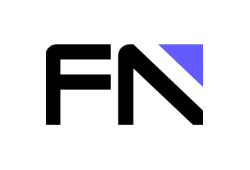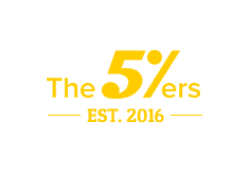Cost-Effective Offers from the Cheapest Prop Trading Firms
Before you delve into this trading space, the decision of which prop firm to join is a critical one. While profitability is the ultimate goal, the importance of affordability cannot be understated.
In this article, we will explore the key factors that traders should consider when seeking cost-effective offers from proprietary trading firms. We will delve into aspects such as fees, profit splits, account sizes, and trading platforms, guiding you through the process of identifying the most affordable options available.
Cheapest Prop Trading Firms in August 2025


FundedNext
Fortunly's Rating: Our editorial team determines the rating based on a set of evaluation criteria developed for each product and service category.
FundedNext
- Immediate 15% profit share
- Dedicated account manager assigned to each trader
- Flexible trading guidelines
- Instant funded account available


FTMO
Fortunly's Rating: Our editorial team determines the rating based on a set of evaluation criteria developed for each product and service category.
FTMO
- Profit-sharing ratio of 90:10
- Complimentary mobile application
- Unlimited trading duration


PipFarm
Fortunly's Rating: Our editorial team determines the rating based on a set of evaluation criteria developed for each product and service category.
PipFarm
- Lifetime loyalty system
- No withdrawal fees
- No add-ons or upgrades being sold


Darwinex Zero
Fortunly's Rating: Our editorial team determines the rating based on a set of evaluation criteria developed for each product and service category.
Darwinex Zero
- In-depth analytics
- No limitation rules (no min/max drawdown)
- Ideal for traders building their track record


The 5%Ers
Fortunly's Rating: Our editorial team determines the rating based on a set of evaluation criteria developed for each product and service category.
The 5%Ers
- Diverse account options
- Immediate fund availability
- Extensive array of trading resources
- Regular monthly income possible
- Incentive rewards
- Industry-leading rapid scaling program
- No time limits on all programs
What to Consider when Looking for Cheap Prop Firms
To understand the significance of affordability, let's first look at how costs influence a trader's choice of prop firm. Proprietary trading firms vary widely in their fee structures, profit-sharing models, and account size requirements. Some firms may charge high fees and demand larger account sizes, while others offer more favorable terms.
As a trader, it's essential to balance the potential for profit with the costs involved.
Identifying Affordable Offers
Affordable offers typically include favorable profit splits, low-cost evaluation processes, and transparent fee structures. Traders should look for firms that provide a clear breakdown of their costs, enabling them to calculate potential earnings accurately.
Critical Factors for Traders
Affordability doesn't mean compromising on important factors like leverage, trading strategies, and platform choices. These elements can significantly impact overall costs in prop trading:
- Leverage: Choose a firm that offers competitive leverage ratios to maximize your trading potential while keeping costs in check.
- Trading Strategies: Consider a firm that allows you to implement your preferred prop trading strategies without excessive restrictions.
- Platform Choices: Opt for a trading platform that aligns with your trading style and provides essential tools and data.
Additional Benefits
Also look for firms that provide:
- Robust customer support to address your queries and concerns promptly.
- Access to educational resources to enhance your trading skills.
- Advanced trading tools and analytics to make informed decisions.
Navigating Promotions and Discounts
To further reduce costs, traders can take advantage of promotions, discount codes, and other offers provided by prop firms. Keep an eye out for promotional periods and special offers that can provide additional savings.
A Guide on How to Maximize Profits when Trading
Maximizing profits in trading requires a combination of strategy, risk management, and discipline. It's crucial to approach every trade with a well-thought-out plan. Here are some tips that may help to maximize profits when trading:
Choose the Right Broker
Start by selecting a reputable and regulated prop firm and broker. Ensure they offer a wide range of assets, fair payout percentages, and competitive pricing.
Educate Yourself
Invest time in learning about trading and the underlying assets you intend to trade, taking advantage of the education systems provided by your prop firm. Understanding market trends, analysis methods, and economic events can further improve your decision-making when making trades.
Develop a Trading Strategy
Create a clear and tested trading strategy that includes entry and exit points, risk management rules, and criteria for selecting trades. Strategies could include trend following, range trading, or news-based trading.
Practice with Demo Accounts
Most brokers offer demo accounts that allow you to practice trading without risking real money. Use these accounts to test your strategies and gain confidence before trading with real funds.
Manage Risk
Never invest more than you can afford to lose in a single trade. Set a maximum risk per trade, typically between 1-5% of your total trading capital. This helps protect your account from significant losses.
Diversify Your Portfolio
Don’t put too much of your funds into a single trade. Diversify your trades across different assets and timeframes to spread risk.
Use Technical and Fundamental Analysis
Analyze both technical charts and fundamental data to make informed decisions. Technical analysis can help with entry and exit points, while fundamental analysis can assist in predicting market sentiment.
Stay Informed
Keep track of economic calendars, news releases, and market events that can influence the underlying assets you are trading. Sudden market movements can impact binary options.
Use Risk-Reward Ratios
Calculate your potential risk and reward for each trade. Ensure that your potential reward justifies the risk you are taking. A common rule is to aim for a risk-reward ratio of at least 1:2.
Set Stop-Loss and Take-Profit Orders
Some brokers allow you to set stop-loss and take-profit orders, even in binary options. These can help you automatically exit trades at predetermined levels.
Keep Emotions in Check
Emotions like greed and fear can lead to impulsive decisions. Stick to your trading plan and avoid chasing losses or overtrading.
Review and Analyze Trades
After each trade, evaluate your performance. Identify what worked and what didn't. Adjust your strategy based on these insights.
Continuous Learning
The binary options market is dynamic, and it's essential to adapt and refine your strategies as market conditions change. Stay up to date with market developments and trading techniques.
Remember that trading involves risk, and there is no foolproof strategy to guarantee profits. However, by following these tips and maintaining discipline, traders can increase their chances of success and maximize profits while managing risk effectively.
